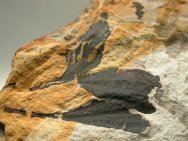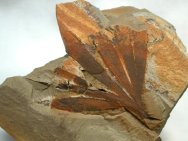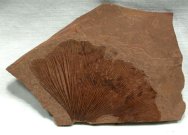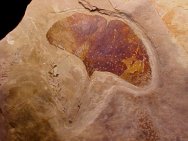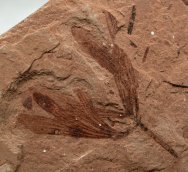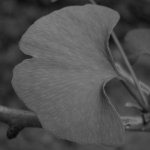 The
Ginkgophyta
probably originated about the same time as the Cycads
during the late Paleozoic, with fossils found in North
America until the Miocene. The fan-shaped leaves of most
members are quite distinctive. Gingko biloba is the only
extant member having no living relatives. The
Ginkgophyta
probably originated about the same time as the Cycads
during the late Paleozoic, with fossils found in North
America until the Miocene. The fan-shaped leaves of most
members are quite distinctive. Gingko biloba is the only
extant member having no living relatives. The
Ginkgo is considered to be a living
fossil, with unambiguous fossils found in Permian
strata. The fossil record indicates that they diversified
and spread throughout Laurasia during the Jurassic and
Cretaceous periods, after which they declined dramatically.
Ginkgo adiantoides was the only remaining species in the
Northern Hemisphere by the end of the Paleocene, and by
the end of the Pliocene, fossil Ginkgos disappeared except
in central China where the modern species has survived.
Zhou,
Z. & Zheng, S. The missing link in Gingko evolution.
Nature, 423, 821 - 822, (2003).
|
| |
|
|
|
|
|
|
Ginkgo
biloba
Middle Eocene
Tranquille Shale, Cache Creek, British Columbia, Canada |
| |
|
|
|
| |
Ginkgo
dissecta
Middle Eocene
Tranquille Shale, Cache Creek, British Columbia, Canada |
|
|
|
|


